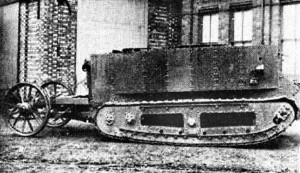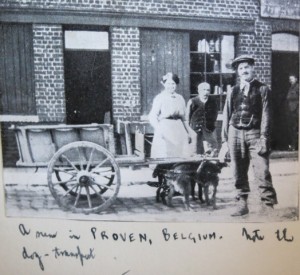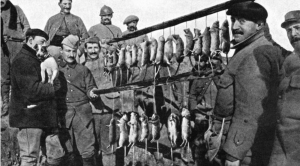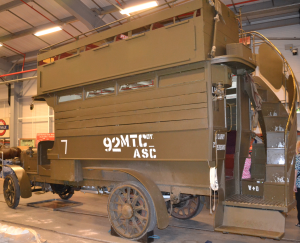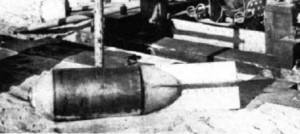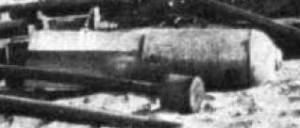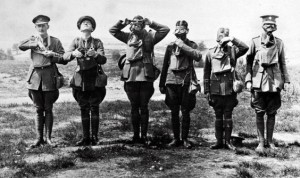Monthly Archives: September 2016
30th September 1916 Saturday
All material produced or reproduced here and throughout this work is the sole copyright of the author and the family of Doctor D.C.M. Page MC.
“Saturday Sept 30th was a great day – our Ambulance Sports. I was on the Sports’ Committee, and we had many hectic days beforehand getting everything in order. The field had to be roped off, and marked out for the various races. We had it nicely decorated with Allied flags. Handicapping the entries was another trickish job. The men were very keen, and training went on far into the night for weeks beforehand! The Sports were a great success, and a big crowd from a wide area was present. The tug-of-war contest was most exciting, and the obstacle race provided a laugh for the onlookers.
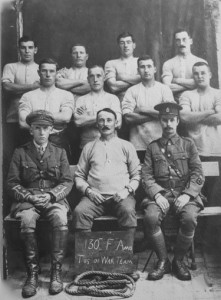
The Winning Team at the Field Ambulance Sports held at Proven, Belgium, September 1916
Lt. Col. J.G.H.Davies D.S.O. on left & R.S.M. Stroud on right.
During the afternoon a Hun aeroplane attacked and set fire to a Belgian captive balloon not far off. The balloon came down in flames. One of the occupants escaped safely via parachute, but the other was burned to death. A dud anti-aircraft shell fell close to the sports’ field, and put the wind up everybody. It was funny to see so many people all ducking and waiting for the shell to explode – which it did not do, of course!
At night our Concert Party gave a very successful show. I appeared in Scottish items and got a fine reception.
Routine work went on all this time in the Ambulance. We generally had from 150 to 200 patients in hospital suffering from all sorts of ailments from slight wounds and septic fingers to pleurisy and influenza. We took it in turns to be orderly officer for the day, which meant that we couldn’t leave the premises, and had to attend to all sick of the unit, and new cases coming into hospital.”
Find out about our connection with Dr Page and an introduction to his diary here
22nd September 1916 Friday
All material produced or reproduced here and throughout this work is the sole copyright of the author and the family of Doctor D.C.M. Page MC.
“On Sept 22nd I left Proven for a course of instruction at the Army Gas School at Cassels. I left at 8.30am by motor ambulance, and had to pick up representatives from the 129th and 131st Field Ambulances en route. However, on arriving at 129 Headquarters, Col. Edwardes told me that the trip was cancelled. On the way back to Proven the Huns were shelling Poperinghe with nasty heavy stuff, and we raced through the town in great style with the wind vertical! The town was deserted, and the inhabitants were fleeing out into the country. It was a pitiful sight to see old women and men struggling along carrying heavy loads – all that they could possibly salve of their belongings. Two Hun aeroplanes overhead were directing the shooting, but some of our battleplanes came on the scene, and soon chased the Huns off.”
Find out about our connection with Dr Page and an introduction to his diary here
18th September 1916 Monday
All material produced or reproduced here and throughout this work is the sole copyright of the author and the family of Doctor D.C.M. Page MC.
“On 18th September I had to give evidence at a Field General Court Martial on a “Tommy” who quitted his post in the front line. My evidence only took about 15 minutes but I believe it got the man “off”. The 13th RWF were in the Chateau Trois Tours where the Court sat.”
Find out about our connection with Dr Page and an introduction to his diary here
Little Willie Leads to Big Cock-up
The idea of a mobile armoured vehicle capable of carrying a crew and fighting soldiers was dismissed by the Army powers that be as being impracticable.
However, in February 1915 Winston Churchill, then First Lord of the Admiralty, formed a “Landships Committee”. Its purpose was to develop an armoured fighting vehicle to convey mass numbers of troops, with a capability of breaking the deadlock that had emerged on the Western front as both sides “dug in” heralding the stalemate conditions of trench warfare. This effort was to result in a prototype vehicle being produced by the autumn of 1915 which became known as “Little Willie”, produced by William Foster & Company of Lincoln. The term “Little Willie”, possibly being an insult to the Kaiser.
Development was taking place in the utmost secrecy, even the name “Tank” was used to fool the enemy into thinking they were making water carriers to convey fresh water to the front line.
The first prototype led to the production of another grander more powerful machine named “Big Willie” which in turn led to the Mark 1 tank.During February 1916 Churchill had contacted General Haig to convince him of the worth of these landships. They were to be used as an infantry aid and any instructions were to be given and commanded in conjunction with an infantry unit. Haig though was a cavalry officer and thought like a cavalry officer. Some have said that Haig was slow to take on new technology and relied too heavily on the use of the horse. An unfair assessment in many ways as he had set up a training school in St. Vernant to train officers in the use of rapidly developing weaponry such as new trench mortars. So he was quite susceptible to the use of new equipment.
Forty nine Mark 1 tanks were eventually delivered to France. Untried and untested, they were sent for evaluation and training in preparation for unleashing a terrifying secret weapon upon the Germans.
Haig though, was under increasing political pressure at the lack of a breakthrough during the Battle of the Somme with the enormous humanitarian cost. Losses of approaching 60,000 on the first day alone followed by continuously mounting casualties and the battle now descended into a war of attrition. This present of a brand new weapon was too much of a temptation. He ordered the tanks to be deployed at a new phase of the battle to begin in the middle of September.
The Battle of Flers-Courcelette began on Friday 15th September 1916. The untried tanks were to be a central part of the operation. The great lumbering beasts, a development of an agricultural tractor with a top speed of around 4mph, powered by an engine around twelve times the size of a modern car engine and carrying a crew of eight, rumbled into the front line for the first time.
A short movie explaining the development of the tank can be seen here.
Out of the number of tanks delivered to France only about 32 made it to the assembly points. Out of these 7 failed to start and only 9 were still serviceable at the end.
As battle commenced the initial effect on the Germans was one of shock and terror. Nothing like these gigantic monsters had ever been imagined in the history of warfare, but soon the tanks’ early vulnerability became apparent. Crews had no training of any kind, they were unfamiliar with anything these machines were capable of, or the terrain they were to be introduced to. Developed in England where they were able to easily cope with ploughed fields and open farmland, they were then thrown onto the moonscape of the Western Front and found the challenge too demanding. The crews not only had to withstand the searing heat of the interior but leaking exhaust fumes filled the tank causing choking and poisoning. The enclosed space of these landships, pitching violently and crashing over the rough terrain, caused seasickness in the crews. The machine gun bullets although not penetrating the armour caused white hot metal to fly off the point of impact on the inside which would stick to the skin of the occupants. There was a lot to learn.
See the Mk1 in action here.
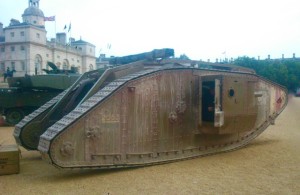
Replica First World War tank used in the 2011 film War Horse on display at Horseguards, London, today 15 September 2016. It normally resides in Bovington Tank Museum, Dorset
Despite having some initial success, they also failed to cause any great lasting victories and would not be used in earnest again until the Battle of Cambrai in 1917. Nevertheless, Haig was sufficiently impressed with their ability to immediately order a thousand to be delivered a.s.a.p.
Winston Churchill was less than impressed with Haig’s desperate use of the prototypes and wrote angrily. “ My poor Land Battleships have been let off prematurely on a petty scale… This priceless conception containing, if used in its integrity and on a sufficient scale, the certainty of a great and brilliant victory, was revealed to the Germans for the price of a few ruined villages.”
Find out about our connection with Dr Page and an introduction to his diary here
13th September 1916 Wednesday
All material produced or reproduced here and throughout this work is the sole copyright of the author and the family of Doctor D.C.M. Page MC.
“Capt Hadly relieved me on 13th Sept 1916, when I returned to the 130th Field Ambulance at Proven where we ran a hospital in tents and the local school. I got a billet in a clean house, and had a real comfortable bed again.”
Find out about our connection with Dr Page and an introduction to his diary here
6th September 1916 Wednesday
All material produced or reproduced here and throughout this work is the sole copyright of the author and the family of Doctor D.C.M. Page MC.
“We were relieved at 10pm on the 6th September, and went into the Brigade Rest Camp huts in a wood near Trois Tours Chateau – for a period of rest from the trenches.
Here I was kept busy with sick-parades, etc, and also put the whole battalion through a hut filled with tear gas in order to test their new respirators. All went well.
Some of us had a good dinner one night at Skindles in Poperinghe, and I had tea with our Brigadier – Price Davies, VC, DSO, &c – one day. “
Find out about our connection with Dr Page and an introduction to his diary here
5th September 1916 Tuesday
All material produced or reproduced here and throughout this work is the sole copyright of the author and the family of Doctor D.C.M. Page MC.
“Capt Stokes visited me on September 5th to ask me to catch a live rat for him! He is investigating Weil’s Disease, or, Epidemic Jaundice, a disease which has been attacking troops on the canal bank, and which is thought to be spread by rats. (Stokes proved this to be correct. I caught one old diseased rat for him. It was full of tuberculosis and also had the germs of Weil’s Disease in it.)”
Back on 16th March 1916, Young Douglas Page described how in a lull in activity he was able to bathe the men’s feet, many suffering from trench foot, in the la Bassee Canal. I mentioned at the time of the possibility of Weil’s disease in the water. Today’s post reveals something remarkable. I had no idea of the significance back in March, having forgotten the detail in today’s posting of what seemed like a typically nonchalant entry in the diary. A fact that might indeed have had more significance to Douglas in later life than it did at the time of his diary entry.
Captain Stokes’ request that Douglas find him a live rat to experiment on was to result in conclusive evidence of Weil’s disease being spread by rats, the germs being present in the internal organs and being dissipated in the rat’s urine finding its way into the canal water.
Stokes had in fact been studying Weil’s disease for some time and was to quote a study by researchers in Japan that had produced a paper on it. The discovery was a key factor in diagnosing the illness that had affected hundreds of troops at the time on the Western Front, particularly those by the Yser Canal in the Ypres area.
Find out about our connection with Dr Page and an introduction to his diary here
4th September 1916 Monday
All material produced or reproduced here and throughout this work is the sole copyright of the author and the family of Doctor D.C.M. Page MC.
“On September 4th, with an officer and three NCOs of the Battalion, I journeyed to the Divisional Gas School for instruction in the use of the new British issue gas helmet – small box respirator. We walked to Vlamertinghe, when we boarded a London motor bus, which took us to Divisional Headquarters. There we were put through drill with the new helmet, and also into a room full of tear gas, and another room filled with chlorine gas. None of us were affected by the gases, and all seemed to enjoy the experience.”
Find out about our connection with Dr Page and an introduction to his diary here
1st September 1916 Friday
All material produced or reproduced here and throughout this work is the sole copyright of the author and the family of Doctor D.C.M. Page MC.
“On September 1st I went back to my quarters on the canal bank as the regiment was going into the line for five days. Just after I left the chateau ten shells landed in the courtyard, killing our tailor Ambrose Jones – and wounding four of our men, and some artillery men from the neighbouring batteries. I had a lucky escape! Our guns gave the old Bosche merry Hell for this and of course he replied in kind seeming to concentrate his fire on Bridge 6 just as I was about to cross the stinking canal. I had the wind-up properly, but dashed across to safety between the salvoes. The Hun was very angry all that night, and sent over lots of rum-jars* and rifle grenades. We had only one casualty – a bomber, hit in the cheek, and shoulder.”
*A “Rum Jar” was a slang term for a German trench mortar. It would typically contain shrapnel of random metal pieces inside what looked like a piece of iron pipe with a wooden base. A home-made affair, typically detonated by a time fuse.
“I spent my days in the line in attending to sick and wounded, seeing that the sanitation was good and in visits of inspection to the companies in the front trenches. Snipers were very active, and one had to go warily. Gas-alarms were frequent. I didn’t like them. One felt so helpless with one’s gas-mask stuffing up one’s face, and with the dug-out doorways hermetically sealed up with thick heavy blankets. I always went out into the open when I heard the gas alarm – klaxon horns and bells sounding all over the bloody Salient. Whenever the gas alarm was given, our guns at a prearranged signal put down a barrage on the Hun front-line so as to stop any attack. Of course, the noise was indescribable, and when this happened perhaps three times in one night, it was not to be wondered at that we got tired and irritable.”
Find out about our connection with Dr Page and an introduction to his diary here
